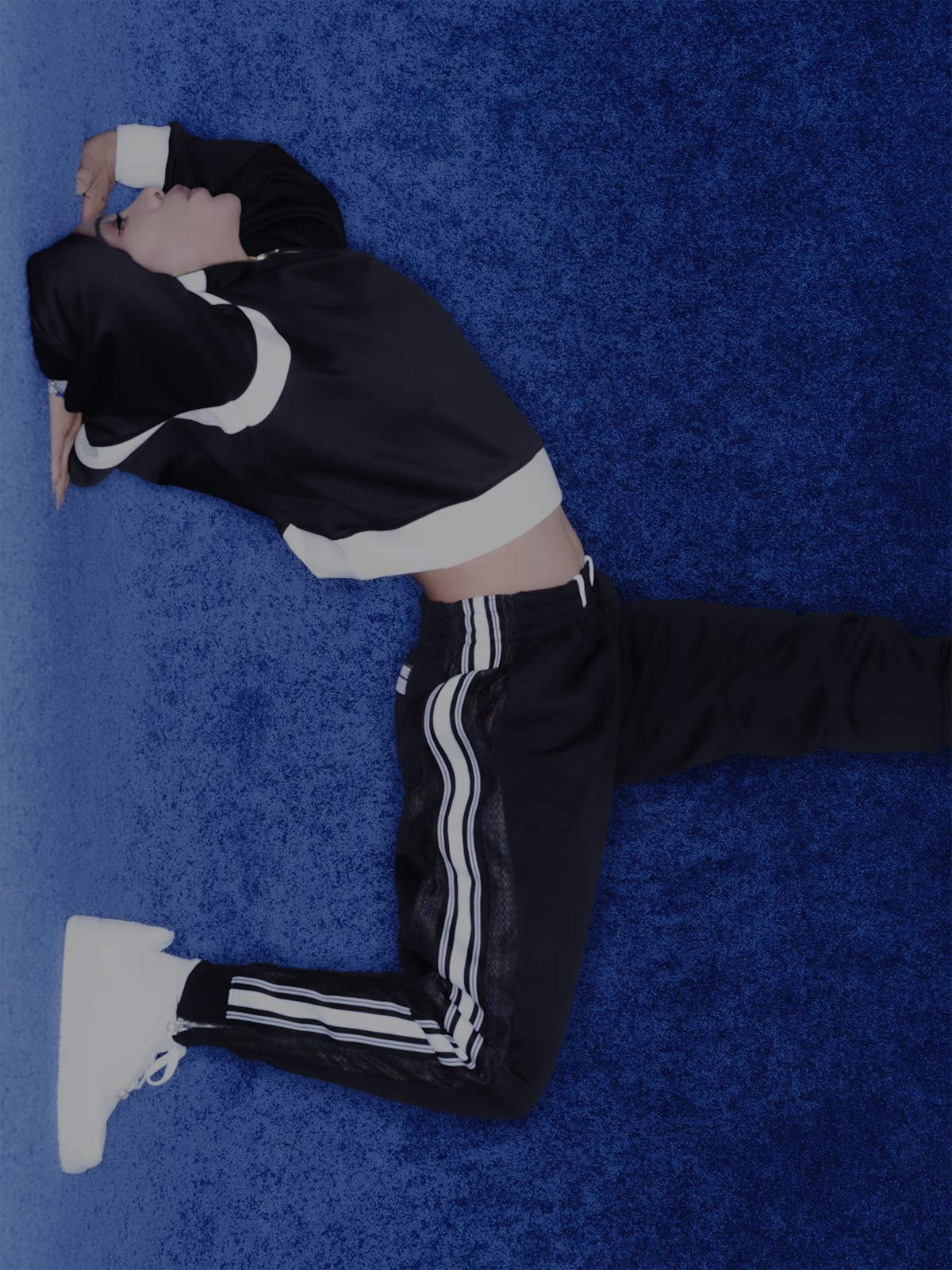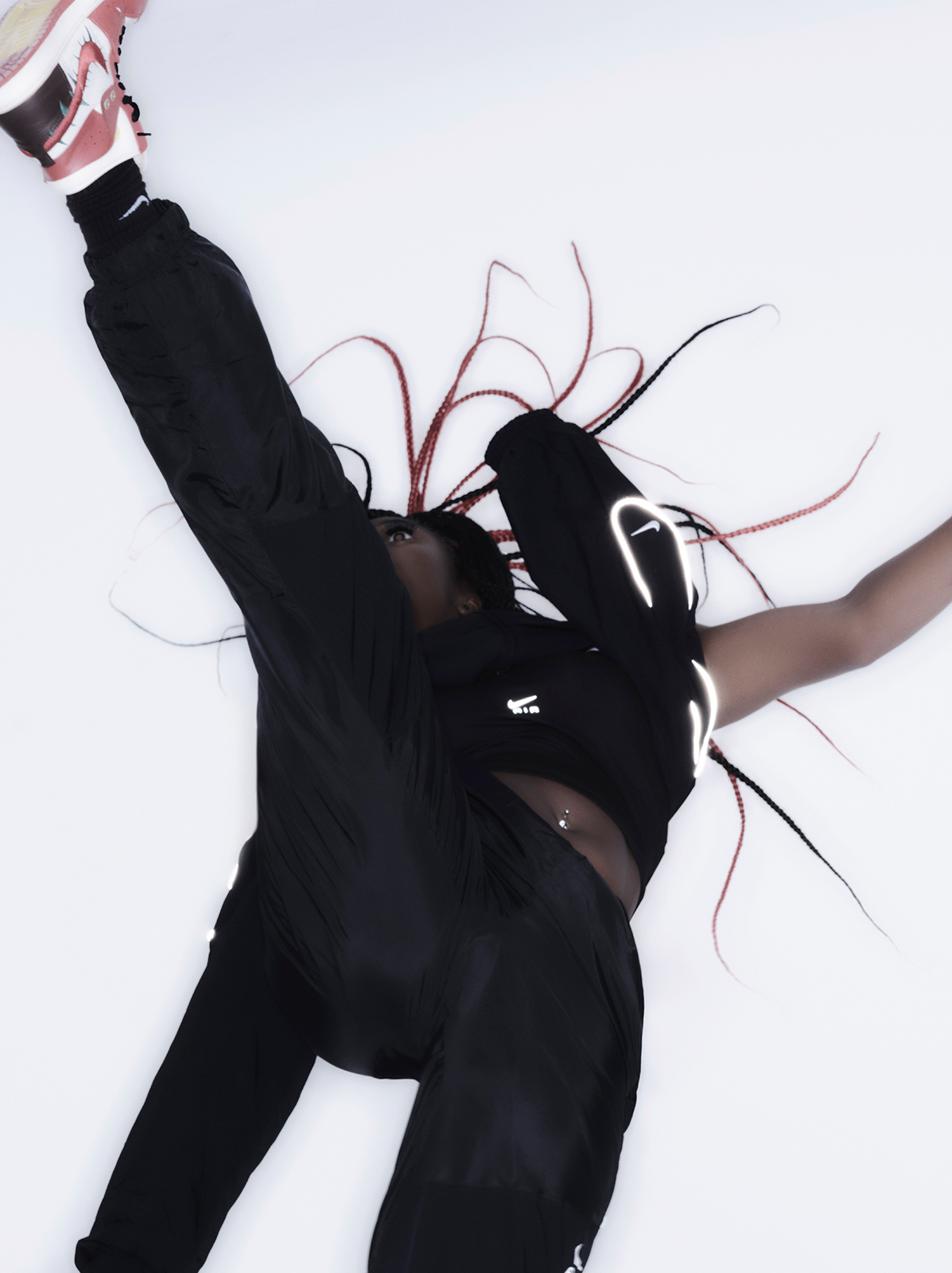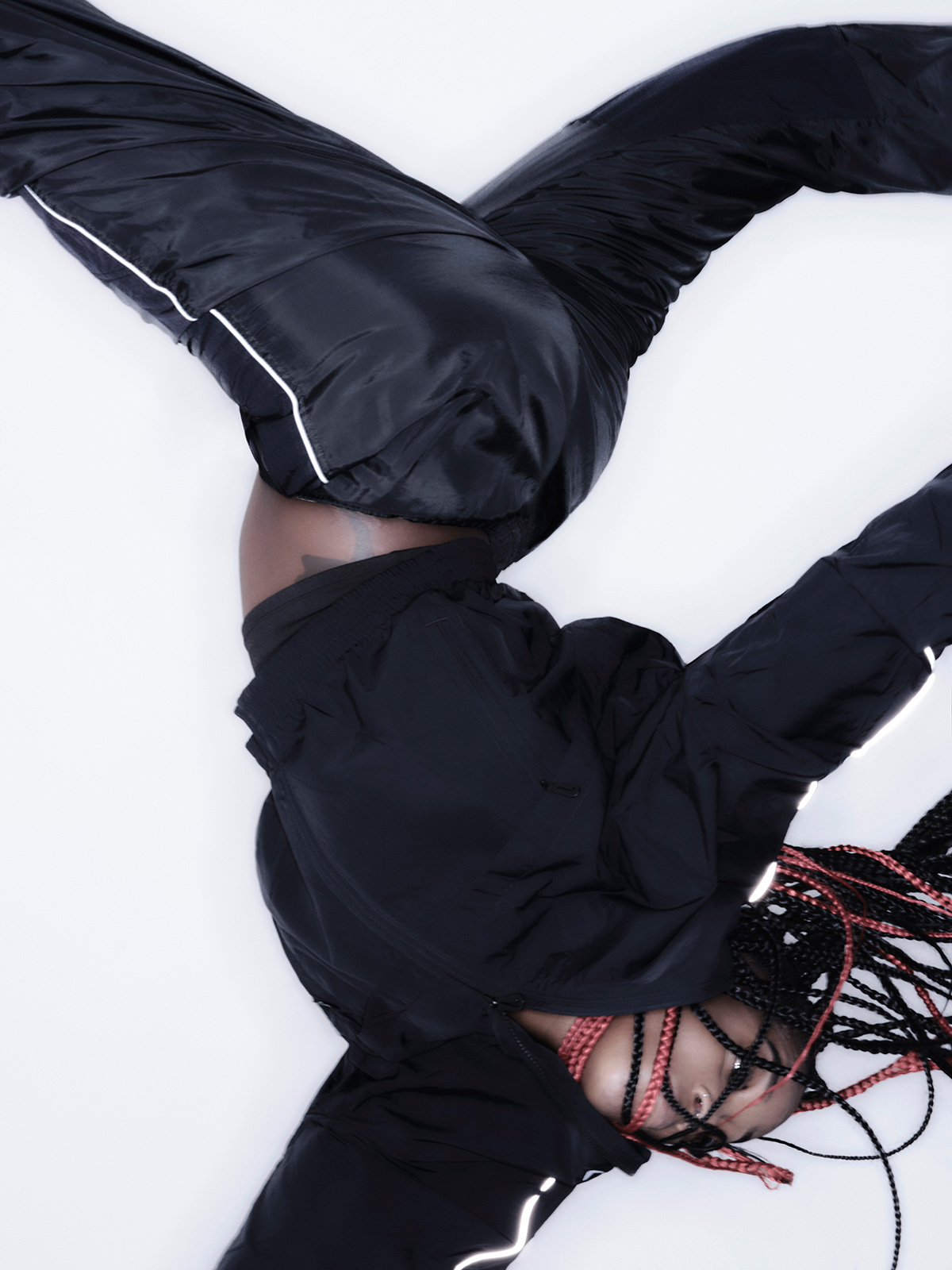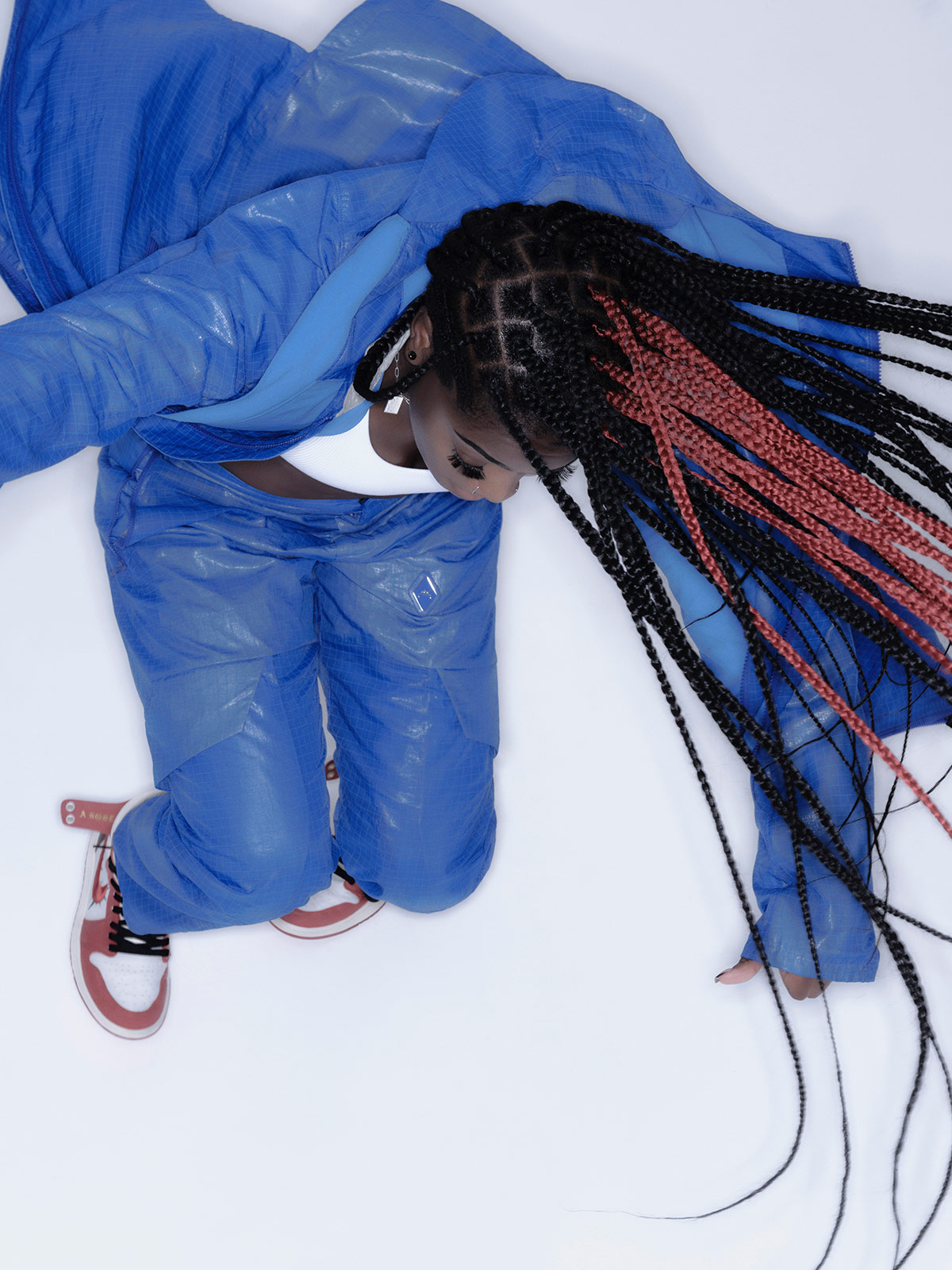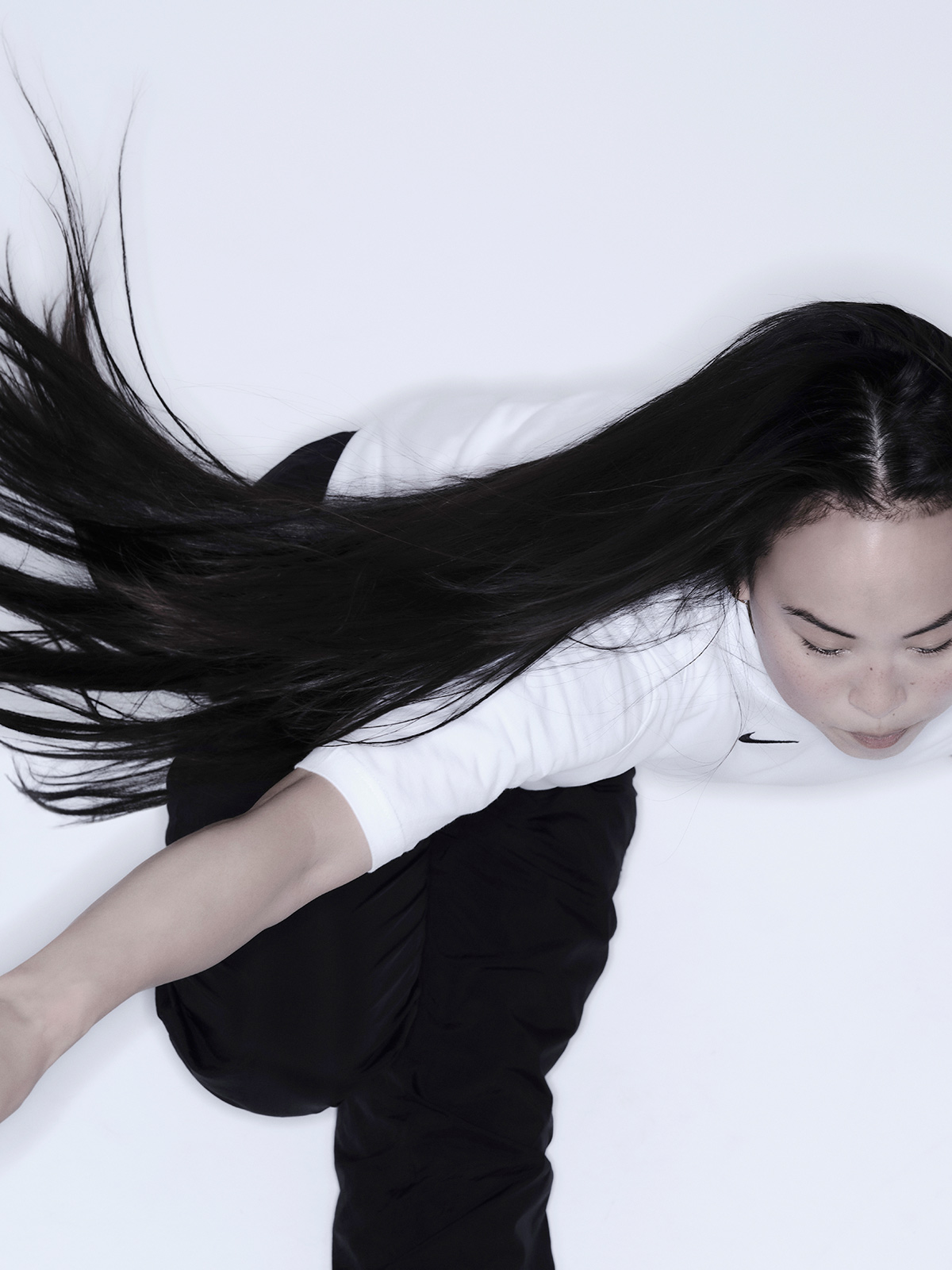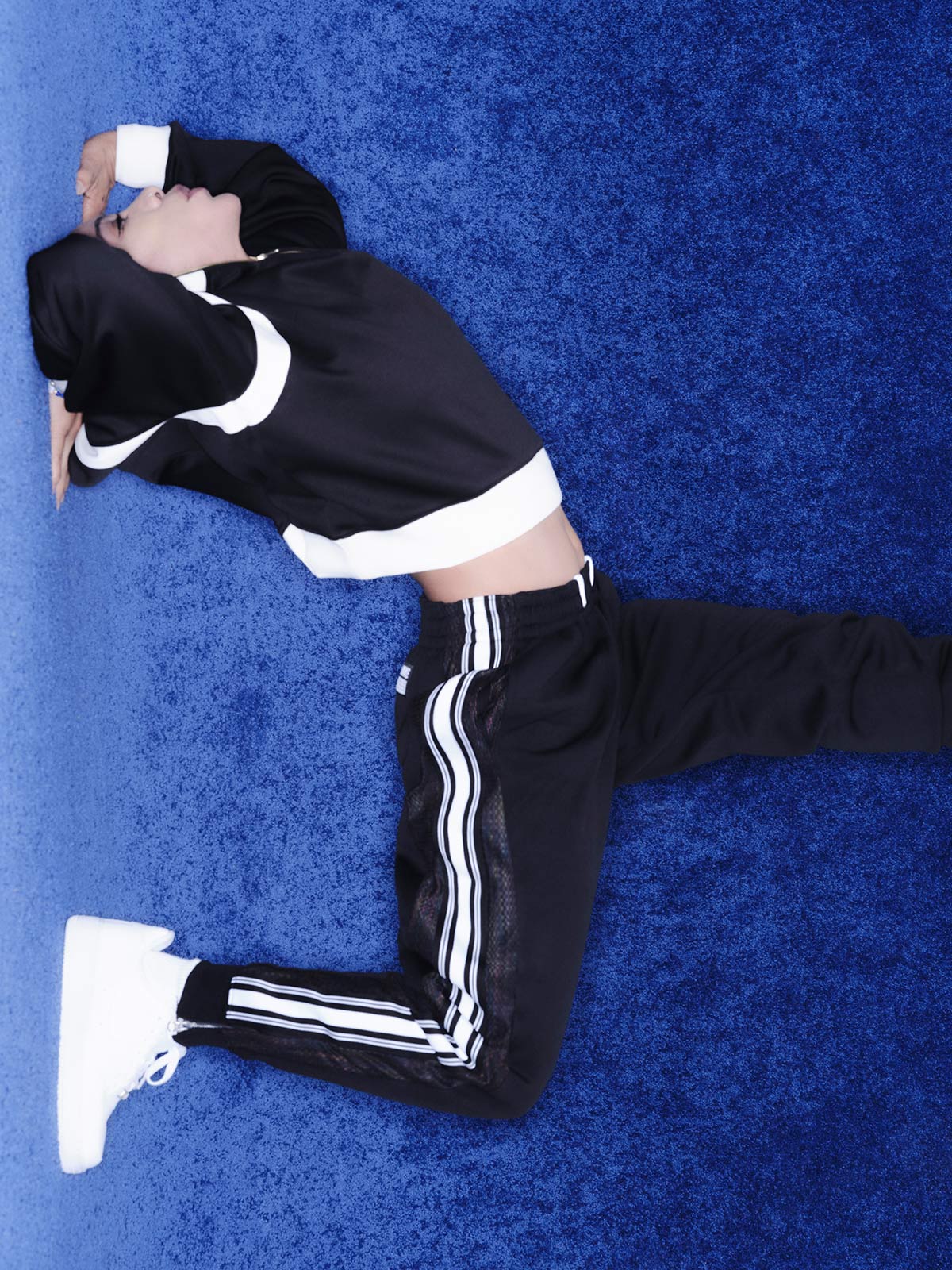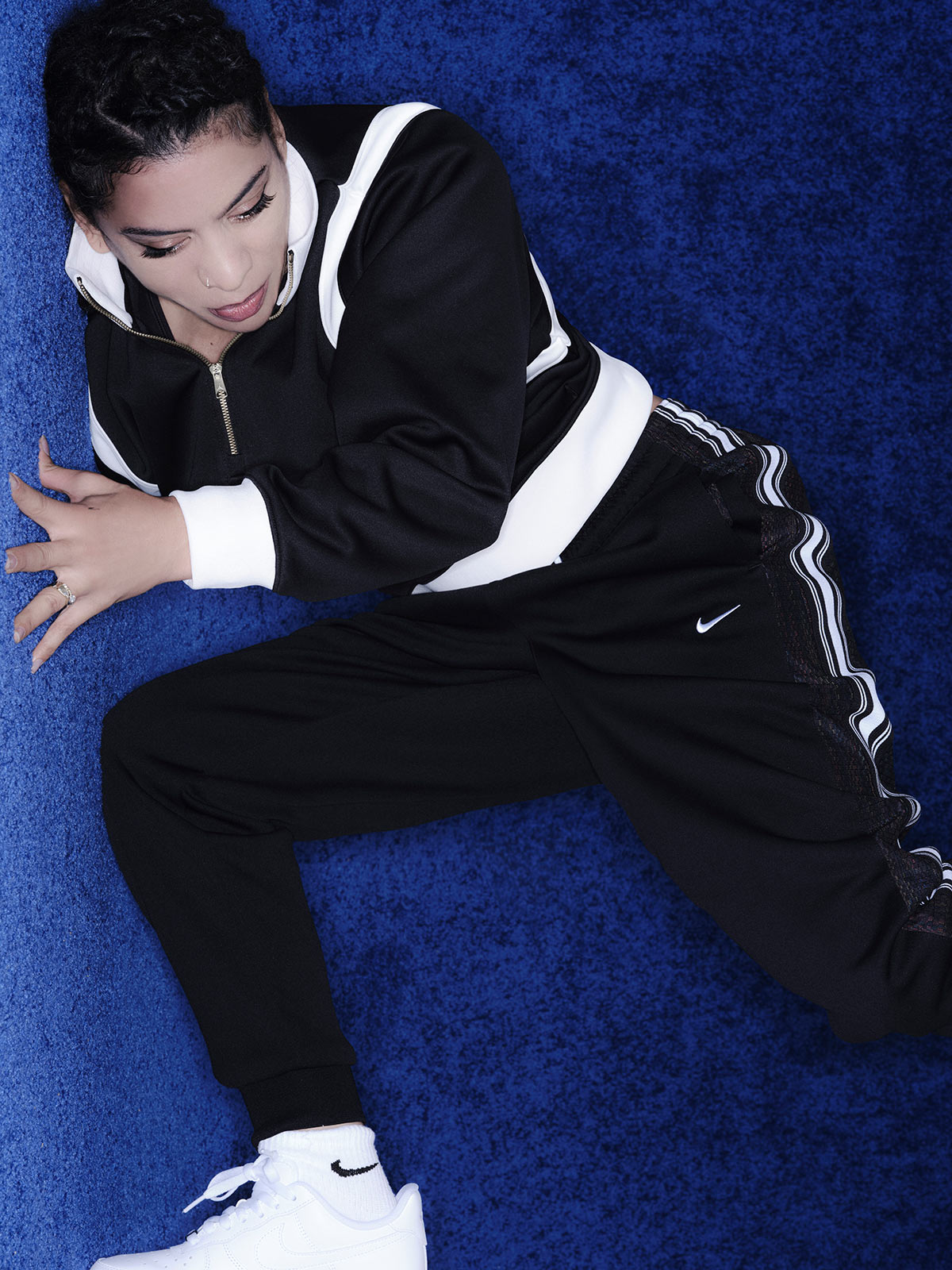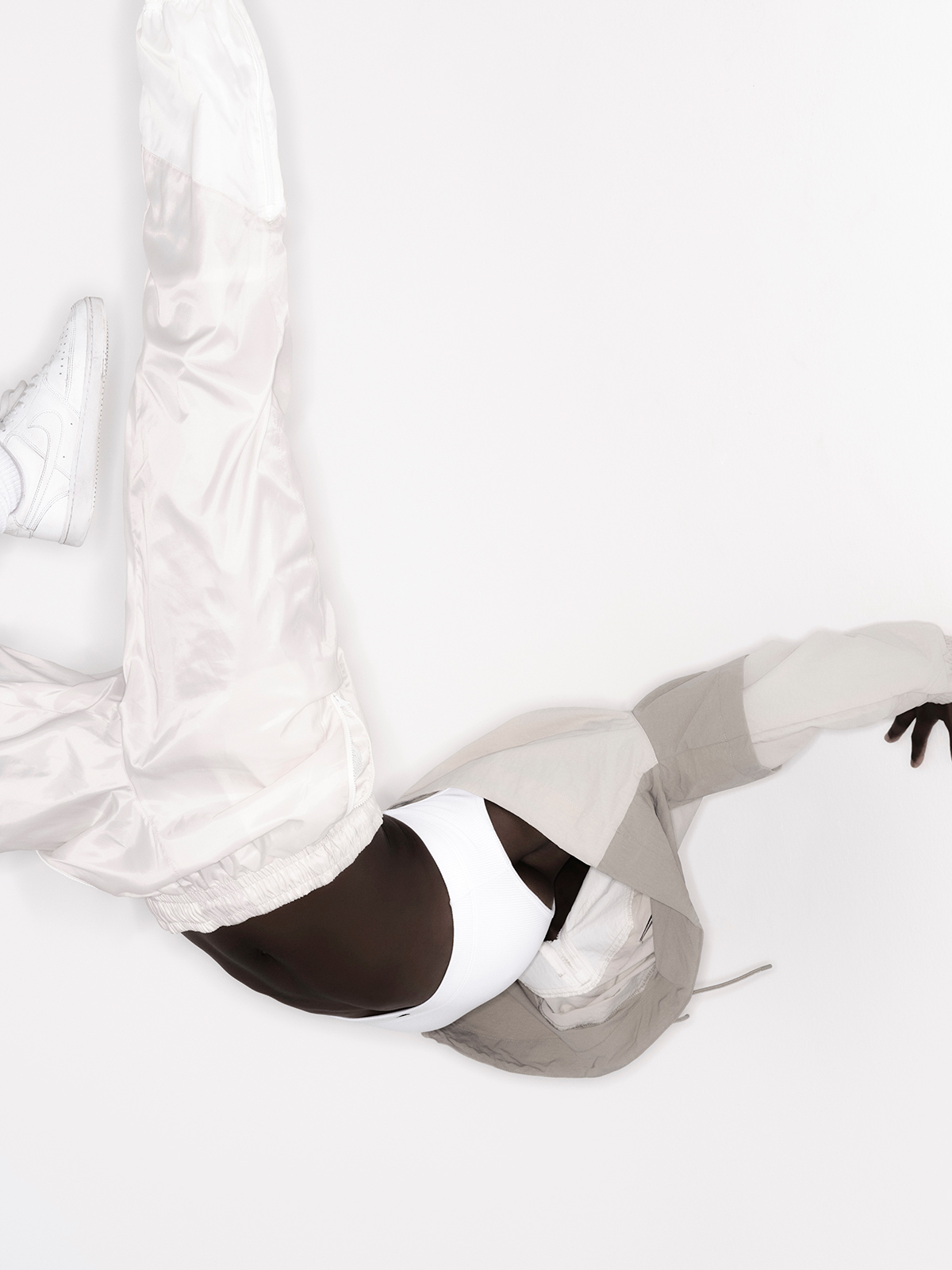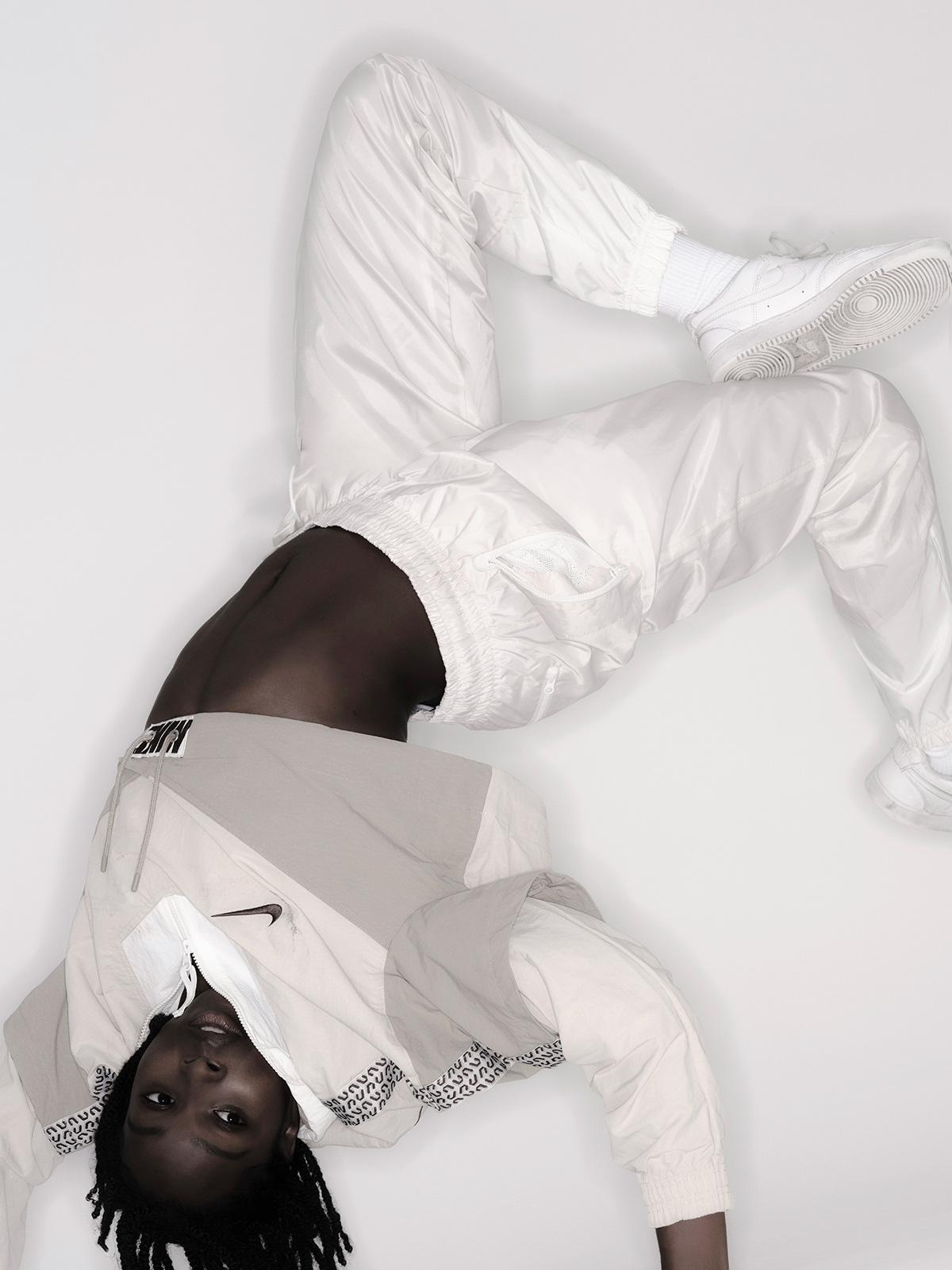Document’s Fall/Winter 2023 issue profiles the women at the forefront of breakdancing as it makes its way to the Olympic floor
It took nearly 50 years, but breaking is finally being recognized as an official Olympic sport for the 2024 Summer Games in Paris. For the women competing in the male-dominated field, this win means so much more.
Breaking emerged in 1970s New York as a rebellious art form, born from disenfranchised Black and Latinx youth. The term is said to have stemmed from the so-called Father of Hip-Hop, DJ Kool Herc. He would isolate the “break” of a track, cueing a second turntable to extend it, and switch back and forth between the two. At the time, “breaking” was a slang term for getting amped up. Herc made the connection, coining the crowd’s reaction to his music “breakdancing,” referring to its participants as “B-boys” and “B-girls.” It became one of the five elements of hip-hop, along with MCing, DJing, graffiti, and beatboxing.
Breaking moved between the streets, nightclubs, parties, and garages via pioneers like Kurtis Blow and Richard “Crazy Legs” Colon from the Rock Steady Crew. Breaking spread to Chicago and California where new styles arose, like the West Coast’s “electric boogaloo” and “popping and locking” (attributed to Soul Train dancer Don Campbell). Since its inception, breaking has made it to the big screen, appearing in films like Wild Style, Beat Street, and Flashdance. And there have always been diehards—those who live and breathe break dance.
Today, we’re witnessing the rise of its next generation. With such a large gender discrepancy, being an active B-girl is a feat in itself. Document spoke to three Olympic hopefuls and one pioneer on the evolution of the sport, and what they see in its future.
Esita “B-girl Flyya” Calhoun, 24, Cleveland, Ohio
Ann Binlot: What made you fall in love with breaking?
Esita Calhoun: The way that I can express myself without having to talk. I could play a song and dance, and if I was having a bad day, [that would make it] better. It can bring people who don’t speak [the same language] together.
Ann: What’s the community like in Cleveland?
Esita: We have a small scene. I’m the only girl in Ohio. The guys are great. The majority of them are like my brothers—they’re really helpful and supportive.
Ann: What was it like when you found out about the Olympics?
Esita: When I did martial arts, I tried out for the USA Wushu Team, but didn’t make it. It’s a crazy, full-circle moment. I want to go to the Olympics and represent my country and my family.
Sunny Choi, 34, New York, New York
Ann: You discovered breaking at a party called the Gathering. What was that like?
Sunny Choi: I didn’t like that gymnastics was so regimented. You had a routine; you performed it hundreds, thousands of times. With breaking, there’s so much freestyle. That intrigued me. And the fact that there weren’t many women in this space [made me think], I want to do that, and I want to do better than all the guys.
Ann: What was your learning process like?
Sunny: When we went to the Gathering, I just watched. It wasn’t fear of being judged by others; it was my own standard for perfection that I couldn’t meet.
One thing that changed was realizing how few women are breaking, and wanting to represent us. Sometimes, I was the only girl out of a hundred people.
Ann: Describe the moment you found out breaking was going to be an official Olympic sport.
Sunny: I wasn’t sure if I wanted to go out for it. Part of it was fear of failure. And I knew that I couldn’t go for the Olympics and have a full-time job, because I wouldn’t be happy half-assing it.
[Quitting my job] was hard. In 2022, I hit a breaking point. I started a job that required more hours than I had ever worked before. It became impossible to manage.
Ann: What is it like competing as a woman?
Sunny: People say, ‘You’re good for a girl,’ or, ‘That’s dope for a girl.’ I got over that, and I’m [seen as] equal.
Ann: How did you overcome your shyness?
Sunny: Doing it over and over again until I got comfortable. I’ve spoken about being an Asian-American, [and how] I have struggled with belonging in general. I thought the breaking community didn’t accept me, but it was me not allowing myself to be accepted. Nobody ever saw me as an outsider.
Ana “Rokafella” Garcia, 52, New York, New York
Ann: What was the breaking scene like when you were growing up in Spanish Harlem in the ’70s and ’80s?
Ana Garcia: Breaking was happening everywhere—every party, every barbecue. Then movies like Beat Street and Breakin’ made everybody think, I can do this, too.
Ann: How did you learn in the ’80s?
Ana: We copied each other. If you were lucky, you saw something on Soul Train or in a music video.
Ann: Why was it appealing to you?
Ana: I was growing up at a time when it was dangerous, and I was not being groomed to be glamorous. The dance embodied that. There was a don’t test me kind of attitude to it, and I liked that.
Ann: Breaking has had so many waves. Can you speak about its evolution?
Ana: Breaking samples so many things: Bruce Lee and kung fu, gymnastics, salsa, tap. Because it has all these different influences, at any given time, the trend can pick up—there’s a different aspect that’s being highlighted.
Ann: How did you feel when it was announced that breaking would become an official Olympic sport?
Ana: I felt like the train left the station without me. I was there, trying to let people know that it can’t be presented as a static thing. It has to reflect the people that it comes from—regardless of the country. I also was very vocal about the music. We need to protect Black and Brown musicians and artists and DJs.
Ann: What advice would you give to younger dancers?
Ana: They have to be aware of who was behind them, and who’s ahead. With that, you don’t get lost [in the], I’m the flavor of the month. We’re not disposable. You need to build inroads to the community. Otherwise, you’re just playing with dolls.
Carmarry “Pep-C” Hall, 28, Indianapolis, Indiana
Ann: What drew you to breaking?
Carmarry Hall: As far as heritage and culture, it appealed to who I am, where I’m from. It gave me a sense of, like, I’m different. Not a lot of women break. I was attracted to the strength that it has.
Ann: How did you learn the moves? Did they come naturally?
Carmarry: It goes against our anatomy. You have to be determined. Because our hips are our center of gravity, it’s very challenging. But [it’s] addicting, seeing yourself get closer to the move. Once you finally get it, that’s the greatest sense of accomplishment.
Ann: Are there female breakers who influenced you?
Carmarry: When I started to break, my coach was one of the few Black B-girls, so she sent me some other Black figures.
Ann: Do you feel underrepresented in that sense?
Carmarry: Absolutely. If you’re in it for a while, you can see where we can do better. There aren’t a lot of Black B-girls; I can’t tell you the reason why. I had to change my whole way of being to perfect this craft. You’re on the floor a lot. As a Black woman, putting my head on the ground is not conducive to the way I care for my hair, which is where my signature scarf comes in, because I need to protect it from getting dirty.
Ann: What does it mean for breaking to become an official Olympic sport?
Carmarry: They’re trying to bring fresher sports into the Olympics [to attract] a newer audience. The Olympics are supposed to be [about] showcasing countries and garnering a sense of togetherness through sport. Breaking is one of the few arts that is already doing that, without trying.
Talent Sunny Choi, Ana Rokafella Garcia, Esita ‘Flyya’ Calhoun, Pep-C. Hair Nero using Oribe at MA+ Group. Make-up Allie Smith using Shiseido at MA+ Group. Set Design Elysia Belilove at 11th House Agency. Lighting Director Daren Thomas. Stylist Assistant Emelia Kendal Watson. Hair Assistants Emily Knapton, Nyla Nasser. Make-up Assistant Zac Hart. Production Walter Schupfer. Retouching Purple Martin Studio.


